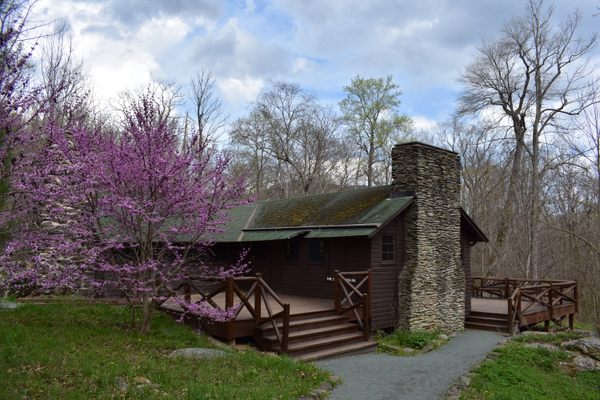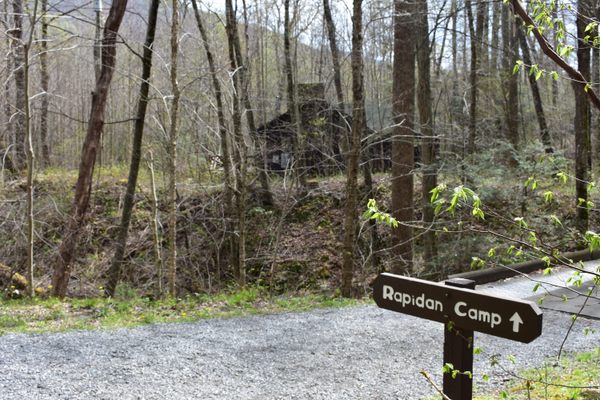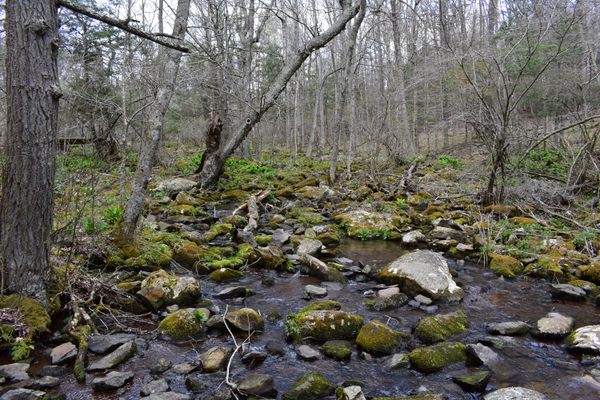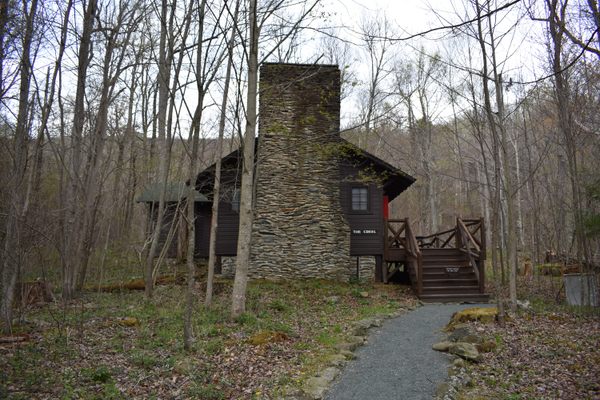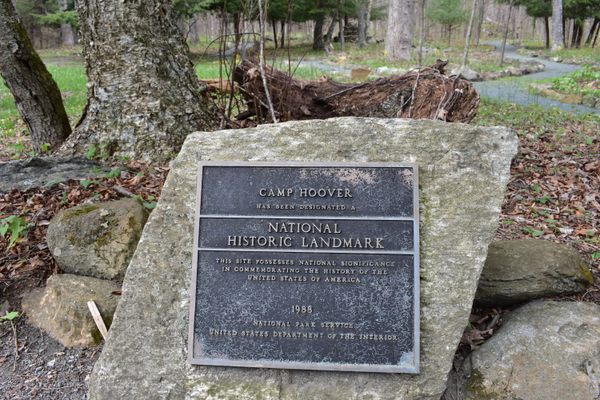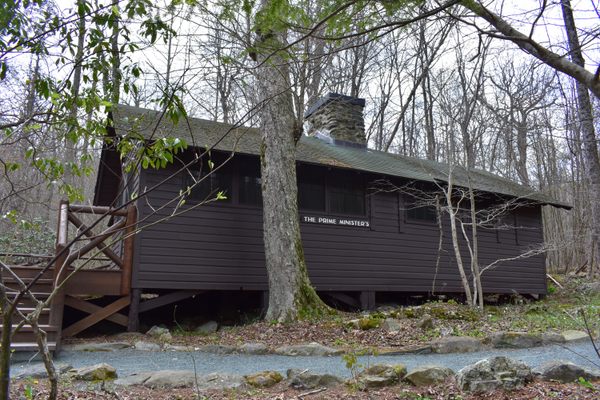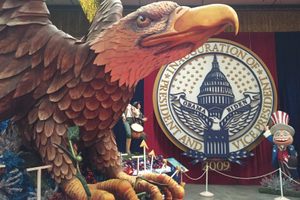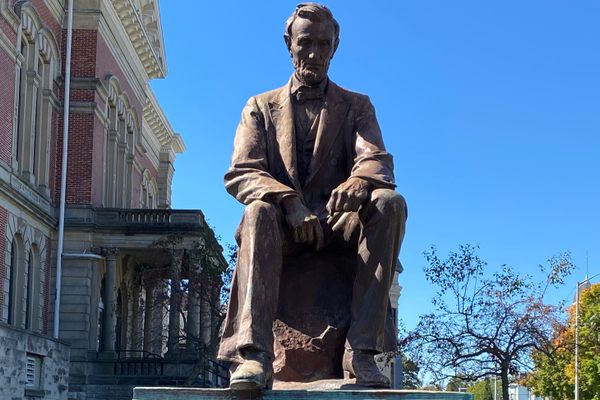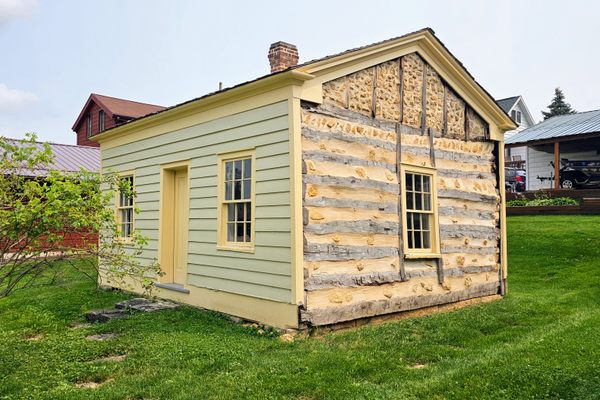About
When President Herbert Hoover and his wife Lou sought refuge from the bustle and heat of Washington, D.C., they were taken to a rural area nestled in the Blue Ridge Mountains of Virginia, near the headwaters of the Rapidan River. Smitten with the place, the Hoovers immediately purchased 164 acres of the property and began planning the construction of the presidential retreat that would become Rapidan Camp.
First Lady Lou Hoover took charge of planning the camp, and U.S. Marines provided much of the labor under the auspices of a training exercise. This arrangement provoked a minor scandal and Hoover was forced to issue a statement stating that he would reimburse the federal government "for every nail and stick of wood."
As Rapidan Camp neared completion in September of 1929, it had grown to encompass a complex of 13 cabins, supported by a purposefully built electrical and highway infrastructure. Streams were diverted into idyllic, artificial waterfalls that flowed beneath footbridges and into well-stocked trout ponds. The Hoovers' personal cabin was named the “Brown House” in woodsy contrast to their home in the city, the White House. In order to stay up to date with the news and current events, mail and newspapers were dropped into the camp daily by airplane.
Alas, 1929 was not the best year to build a new presidential retreat from a public relations perspective. Seven months into construction, the New York stock market crashed and the nation plunged into the Great Depression. Hoover's frequent weekend jaunts to Rapidan with his friends and political elites reinforced the negative view of his inaction on the economy.
Hoover compounded the problem with a tone deaf publicity stunt in 1932, inviting members of the press along on one of his trips to Rapidan. He had hoped that the press would see him relaxing at the retreat, leisurely fishing and taking strolls around the property, and report to the public a softer image of the President. Instead, he came across as out of touch with the disaster facing average Americans, removed and ambivalent from their situation by his wealth and position of power. That November, he was swept out of office by Franklin Delano Roosevelt in one of the largest electoral college landslides in U.S. history.
After leaving office, the Hoovers donated Rapidan Camp to the federal government, but President Roosevelt visited just once and found it too rugged for his wheelchair. Roosevelt subsequently had another rural presidential retreat built that was more to his liking, in the Catoctin Mountains of Maryland. It was called Camp Shangri-La, later renamed by President Eisenhower to Camp David. Rapidan Camp largely fell into disuse.
In 1946, the Boy Scouts of America were granted a 20-year lease to operate a summer camp on the site, but withdrew from the lease in 1958, citing rising maintenance costs. In 1960, the government demolished many of the crumbling buildings in the camp. Still, despite its shabby state, several high-ranking government officials have chosen to stay at Rapidan Camp over the years, including President Jimmy Carter, Senator Ted Stevens, and Vice-Presidents Walter Mondale and Al Gore.
The Rapidan Camp was designated a National Historic Landmark in 1988, and in 2004, Shenandoah National Park restored the property and its three remaining cabins and began offering guided tours of the cabins. To this day, like in Hoover's time, the streams around Rapidan Camp are renowned for the quality of their trout fishing, though park regulations put some restrictions in place, including only allowing catch-and-release.
Related Tags
Know Before You Go
Hiking the 1.8-mile Mill Prong Trail from the Milam Gap parking lot in Shenandoah National Park is the easiest way to reach Rapidan Camp. There is also a five-mile round-trip trail from the Skyline Drive Big Meadows area, but this trail has 1,000 feet in elevation change. Be warned, the trails are uneven and have three stream crossings, so dress and prepare appropriately. The Park Service also offers a guided interpretive tour via a bus from the Big Meadows area; visit the Shenandoah National Park site for details and prices.
Community Contributors
Added By
Published
April 24, 2017
